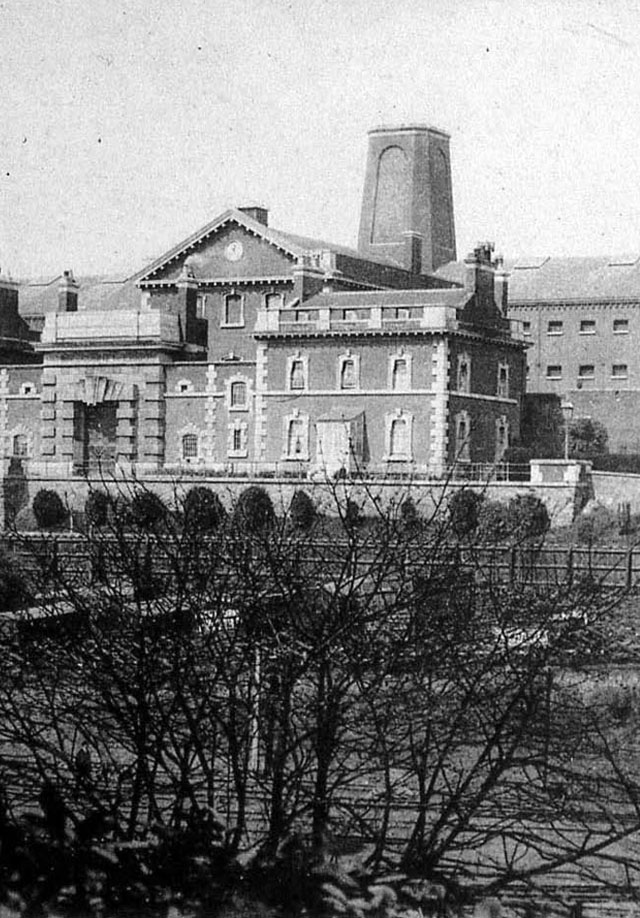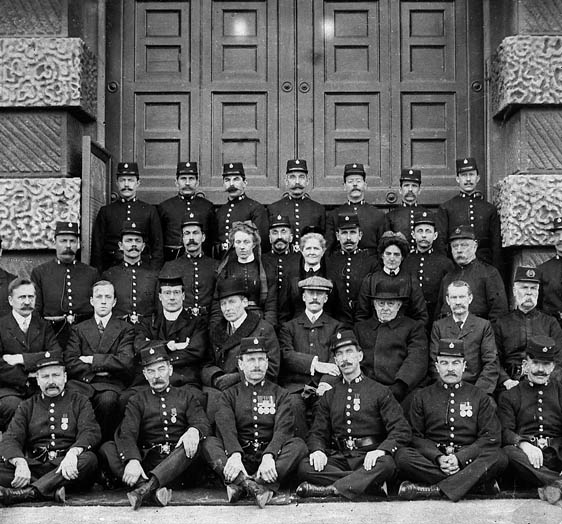Community researcher – John Scott
Occupying a prime position in the parish and dominating the view from Rougemont Castle gardens, HM Prison Exeter is the only remaining prison from the six, that served Devon and the city of Exeter between 1137 and 1855.
The city prisons in the South Gate, Goldsmith Street and Queen Street, and two county buildings in West Exe, have all been destroyed, so that nothing survives of those one-time gaols and wards, except the dungeons below the former county gaol in Rougemont Castle.
The massive structure above New North Road was formally opened in 1853, on the site of, and partially incorporating, both the County Gaol and County House of Correction, or Bridewell as it was known, that had been built for Devon’s County Justices in 1787 and 1809. Despite being relatively new, sanitary conditions in these two gaols were not good.
conditions in these two gaols were not good. There was a need to accommodate all classes of prisoners, male and female, in one establishment with modern facilities that society and Parliament demanded, which all combined to require a completely new prison.
Designed by John Hayward, the Devon County surveyor, construction had to be phased over the years from 1848 to 1856, as although the courts were able to adjust their sentencing practices, the two gaols were required to continue to accept prisoners.
Built of brick, with Portland stone facing, in the form of a cross, so that activities in the wings could be monitored from the centre, this three-storey building with an extensive basement on its southern side, is little changed from its Victorian origins.
Surrounded by a high wall with a central Gatehouse, flanked by the former Prison Governor and Chaplain’s residences, prisoners were held in single cells in the west, north and east arms, known as A, B and C wings, the latter subsequently extended to form D wing for female prisoners. The southern arm, E wing, was the administration block with the prison chapel above. The addition of debtors to the prison population in 1851, required part of the old Bridewell to be retained as F wing.
Over the years, as prison policy developed, separate establishments were provided for women, young and high-risk offenders, leaving city prisons, like Exeter, to cater for the remand and short sentence prisoners. Capital punishment at Exeter ceased after 1943, the condemned cell in B wing being removed in the 1950s.
The emphasis gradually changed from hard labour and isolation to meaningful work, education and rehabilitation, combined with a prompt and efficient service of remands to and from Crown and Magistrates Courts.
Modern sanitation has been installed and both television and wi-fi are available. The old infirmary was replaced with a separate hospital wing on land that was formerly Veitch’s Nursery, where the Works Department now has its facilities with an entrance from Barrack Road, as the Gatehouse is too narrow for most traffic. Staff levels have changed dramatically, from Governor, Chaplain and Surgeon with perhaps 20 warders in the early nineteenth century to 349 in 2002, 180 uniformed, the rest civilian.

